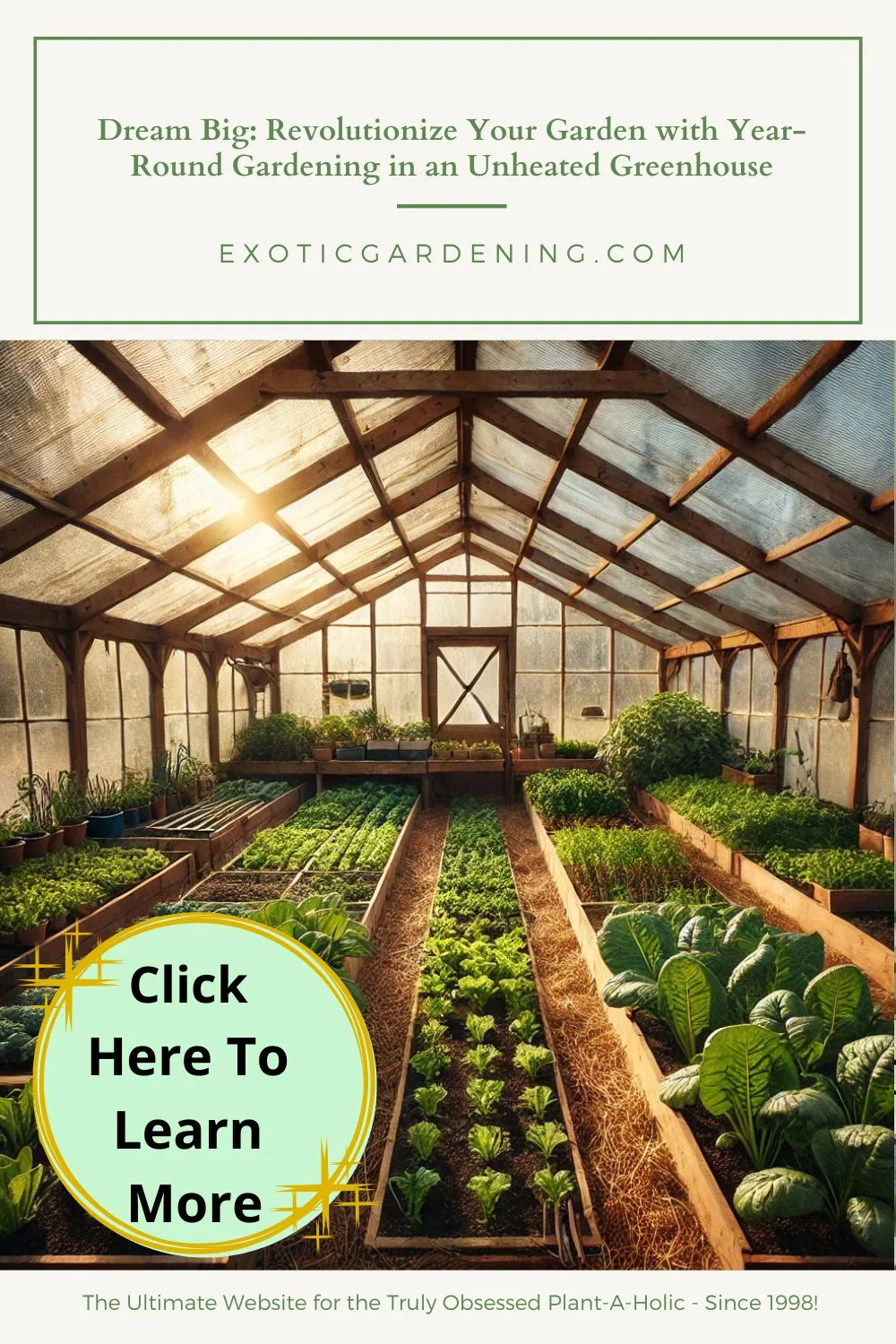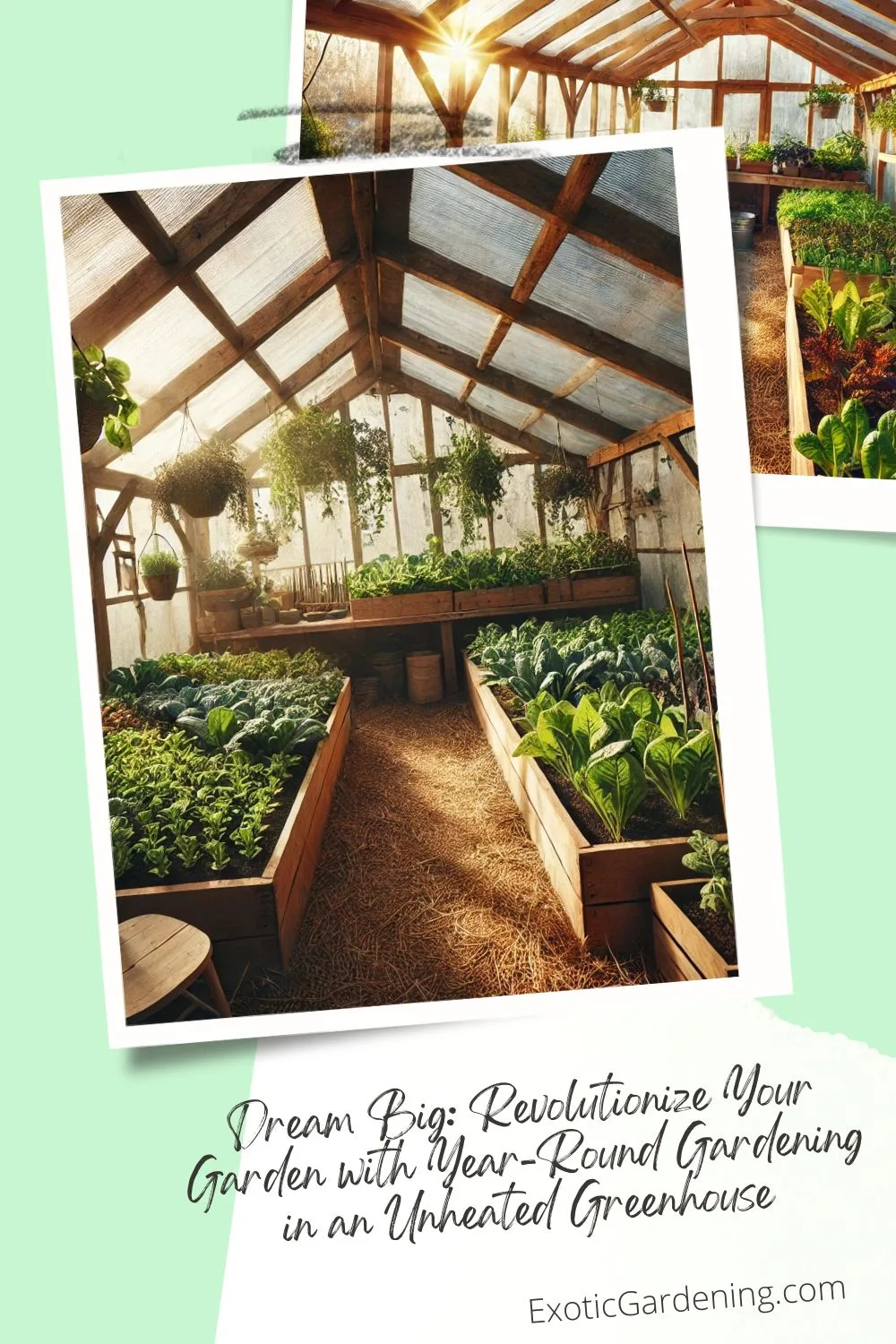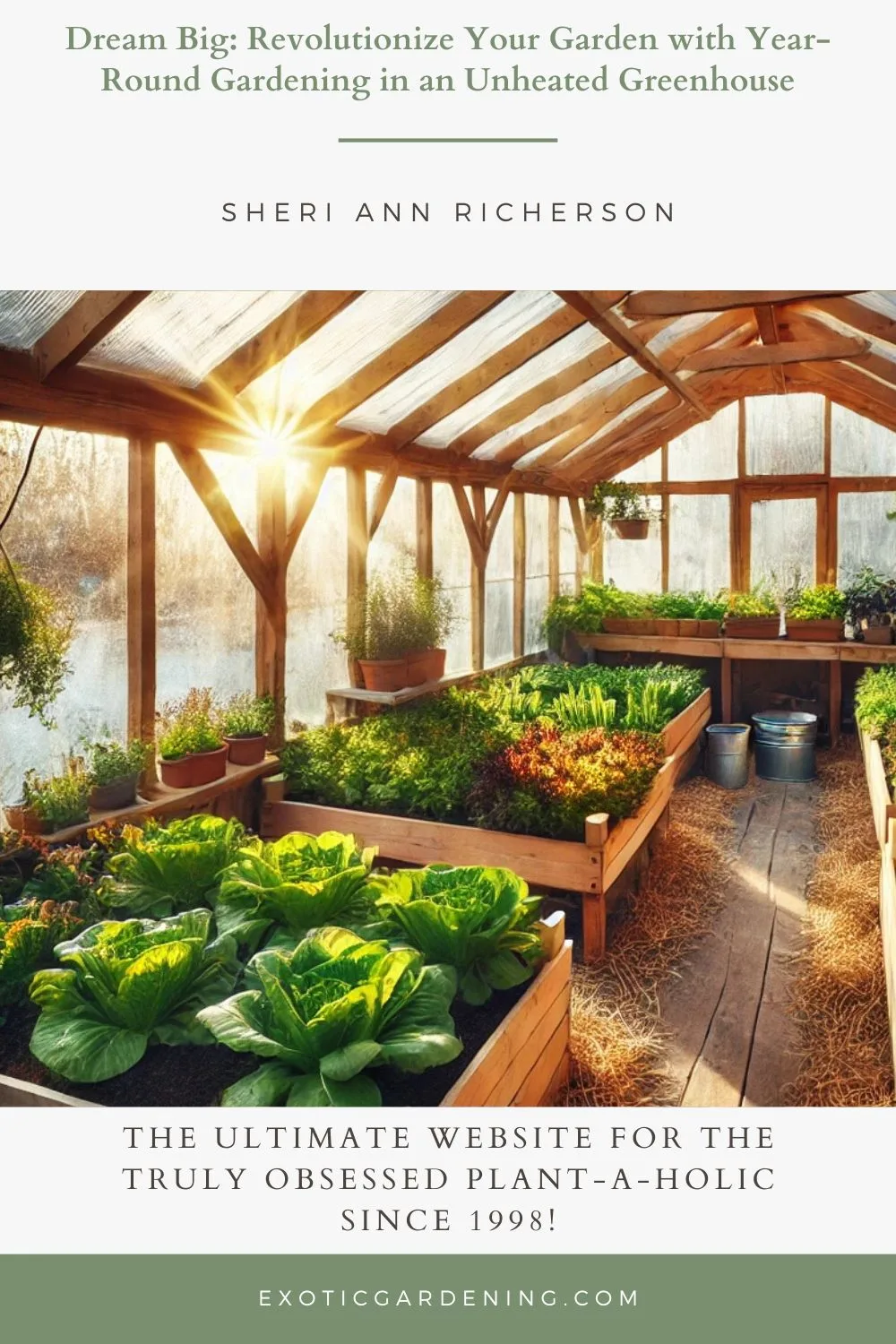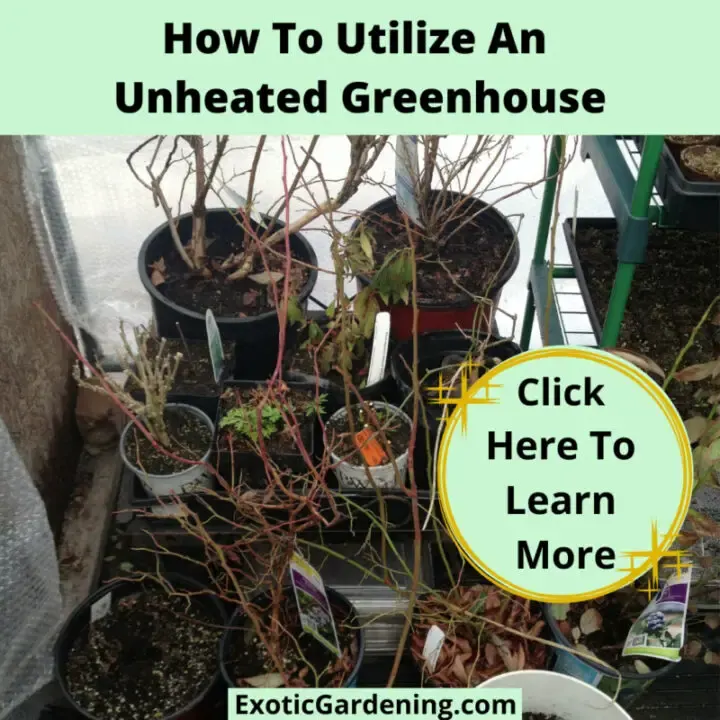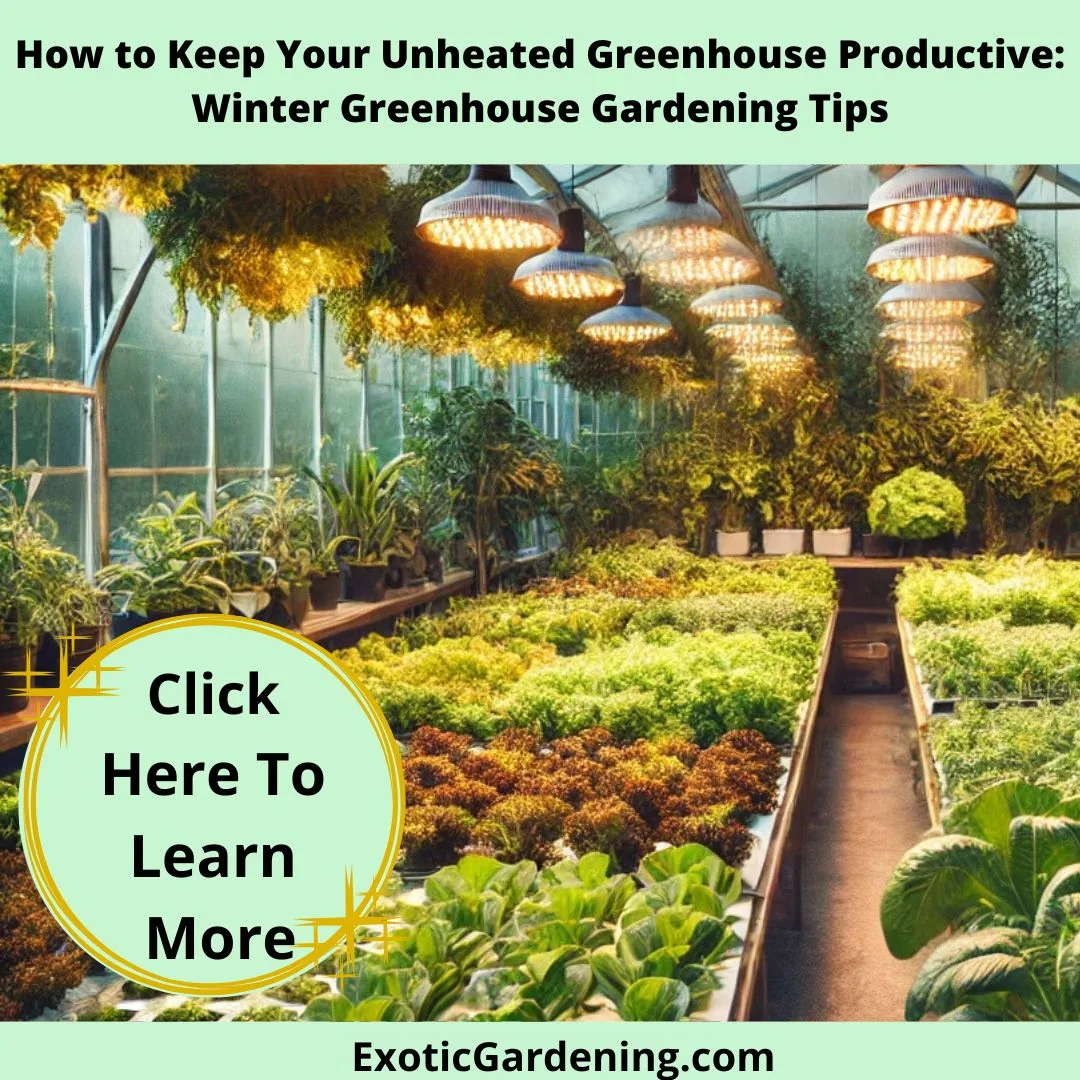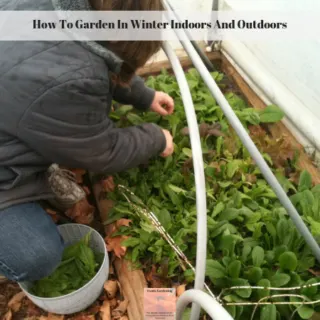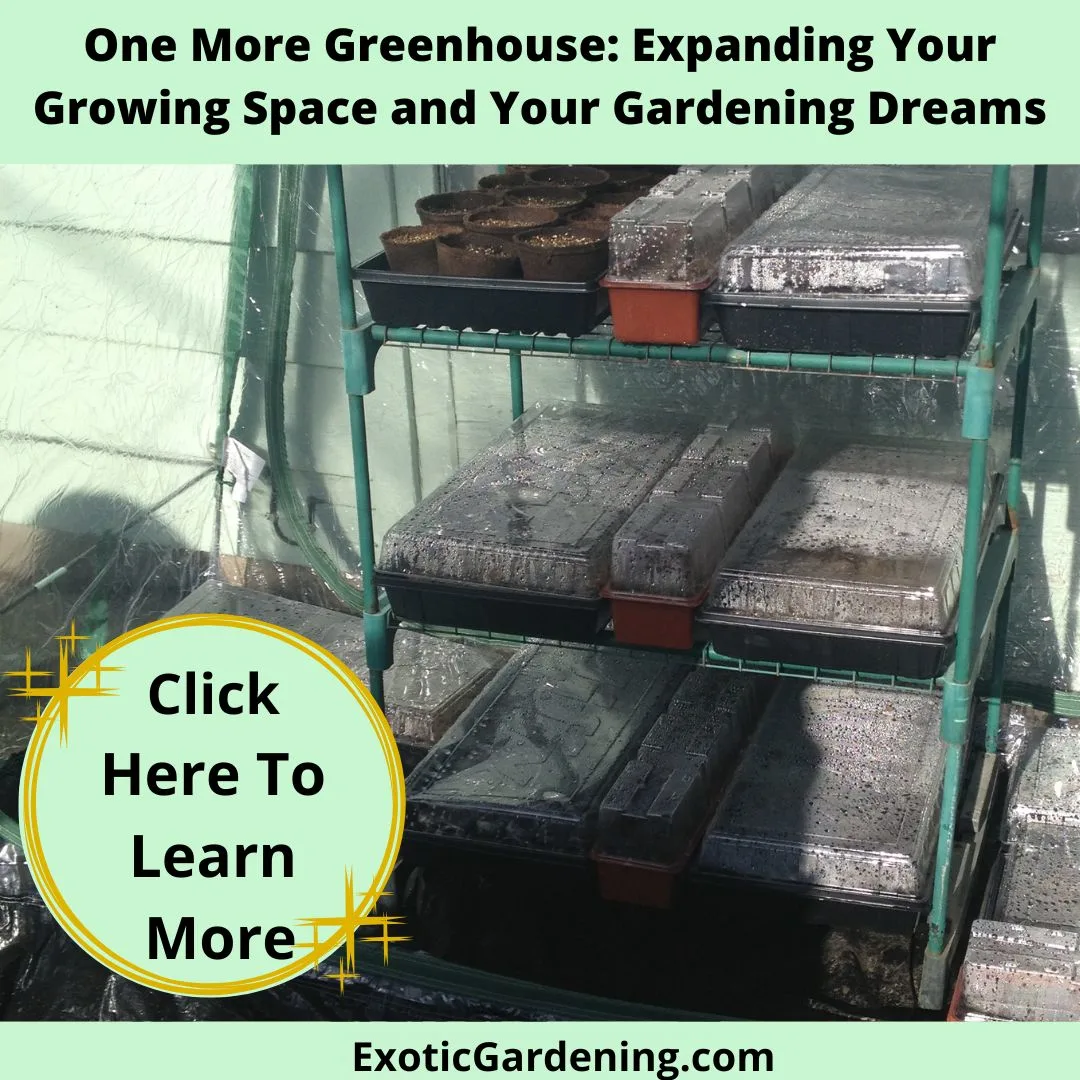Year-round gardening in an unheated greenhouse turns frosty mornings into opportunities to harvest your own fresh food.
Picture stepping into a vibrant space filled with crisp lettuce, tender spinach, and hearty kale, while the world outside remains frozen.
This might sound like a dream, but with a little planning and the right techniques, it’s completely achievable.
An unheated greenhouse is more than just a structure—it’s a tool for extending your growing season, allowing you to enjoy nutritious, homegrown greens even in the depths of winter.
By harnessing natural sunlight and using strategies like insulation and row covers, you can keep your garden thriving all year long.
It’s an incredible way to reduce your reliance on store-bought produce while staying connected to the rhythm of nature.
Whether you’re planting winter crops or nurturing early spring seedlings, the possibilities are endless with an unheated greenhouse.
What is Year-Round Gardening in an Unheated Greenhouse?
Year-round gardening in an unheated greenhouse is the practice of growing fresh produce during all four seasons, even when the temperatures drop below freezing.
These structures rely on natural sunlight to create a protective microclimate, where cold-hardy crops like spinach, kale, lettuce, and carrots can thrive.
Unlike heated greenhouses that require expensive and energy-intensive systems, an unheated greenhouse operates sustainably, relying on the principles of heat retention and strategic planting.
During the day, sunlight passes through the greenhouse panels, warming the air and soil.
At night, that warmth is retained by thermal mass, such as water barrels or stone pathways, which release heat slowly to keep the temperature stable.
While an unheated greenhouse won’t provide tropical warmth, it can make all the difference for growing winter greens and root vegetables or starting spring seedlings weeks earlier than outdoor planting would allow.
Additions like frost blankets, row covers, or cold frames within the greenhouse can offer extra layers of protection for your crops, ensuring they survive even during particularly frosty nights.
These small adaptations amplify the greenhouse’s ability to maintain a productive growing environment, no matter the weather outside.
In addition to supporting year-round harvests, unheated greenhouses are a budget-friendly alternative to their heated counterparts.
By eliminating the need for artificial heating, they significantly reduce energy consumption, making them an eco-friendly choice for gardeners seeking to minimize their carbon footprint.
This sustainable approach not only saves money but also provides a steady supply of fresh, homegrown food during the months when grocery store produce can be expensive or of lower quality.
Whether you’re harvesting crisp spinach in January or watching your early seedlings sprout under the gentle winter sun, year-round gardening in an unheated greenhouse is a rewarding way to stay connected to your garden and nature’s rhythms.
With a little planning, these greenhouses can turn your gardening dreams into a reality, ensuring your efforts yield fresh, nutritious food in every season.
Why Choose an Unheated Greenhouse?
An unheated greenhouse offers numerous benefits for gardeners, from extending harvests to promoting sustainable practices.
Here’s why it’s worth considering:
Cost-Effective Growing
Heating a greenhouse during the winter can significantly increase your utility bills, making it cost-prohibitive for many gardeners.
An unheated greenhouse, however, uses passive solar energy and simple techniques to maintain a productive environment without relying on expensive heating systems.
- Save money by avoiding energy costs associated with heated greenhouses.
- Use thermal mass (e.g., water barrels, stones) to absorb and release heat, keeping temperatures stable.
- Incorporate low-cost solutions like frost blankets and row covers for added insulation.
Extend Your Harvest
An unheated greenhouse opens up possibilities for growing fresh food well beyond the traditional growing season.
Even in the depths of winter, cold-hardy crops can thrive, while summer vegetables benefit from extended ripening time in fall.
- Grow hardy vegetables like spinach, kale, and carrots through the winter months.
- Start seedlings early in spring, giving your plants a head start before outdoor planting.
- Protect summer crops like tomatoes and peppers from early frosts, extending their harvest period.
Eco-Friendly Gardening
An unheated greenhouse is a sustainable choice for gardeners looking to reduce their environmental impact.
By forgoing artificial heating, you can grow food in an eco-conscious way that aligns with natural cycles.
- Eliminate the need for energy-intensive heating systems, reducing greenhouse gas emissions.
- Use compost within the greenhouse to generate natural heat for plants.
- Apply mulch to insulate soil and protect plant roots from extreme cold.
Foster a Deeper Connection to Nature
There’s something special about tending to a thriving garden in the heart of winter.
An unheated greenhouse not only provides fresh food but also offers a place to connect with the cycles of life during the year’s quieter months.
- Experience the joy of gardening when the world outside feels dormant and cold.
- Find mindfulness and peace in caring for plants, even in the harshest conditions.
- Discover the resilience of nature as your crops grow despite the cold.
Increase Food Security
Growing your own food year-round offers a sense of security and independence.
An unheated greenhouse ensures you have access to fresh, nutritious produce regardless of rising grocery prices or supply chain issues.
- Maintain a consistent supply of greens, root vegetables, and herbs throughout the year.
- Reduce your reliance on grocery stores for out-of-season produce.
- Gain confidence in your ability to provide food for your family, even in challenging times.
Encourage Experimentation
An unheated greenhouse is a perfect place to try out new gardening techniques, crop varieties, and ideas.
Each season brings an opportunity to learn and innovate, keeping your gardening journey exciting and rewarding.
- Experiment with growing unique cold-weather crops like mache, tatsoi, or claytonia.
- Try different methods of protecting plants, such as low tunnels or cloches inside the greenhouse.
- Test overwintering techniques for perennials or hardier summer crops.
Benefits of Year-Round Gardening for Mental and Physical Health
Year-round gardening in an unheated greenhouse doesn’t just provide fresh, homegrown produce—it also offers powerful mental and physical health benefits that are especially valuable during the colder months.
Here’s how this practice can improve your overall well-being:
- Stress Reduction:
Spending time in your greenhouse surrounded by greenery can help reduce stress and anxiety. The simple act of tending to plants—watering, pruning, or planting seeds—creates a sense of calm and mindfulness, providing a therapeutic escape from daily pressures. - Stay Active, Stay Healthy:
Gardening keeps you moving, even in winter, offering light physical exercise that improves flexibility, strength, and endurance. Tasks like sowing seeds, turning soil, or harvesting greens are great ways to stay active when outdoor activities are limited. - Boost Your Mood with Natural Light:
Short winter days and long periods spent indoors can lead to seasonal affective disorder (SAD). An unheated greenhouse provides a sunny, warm space where you can soak up natural light, boosting your Vitamin D levels and lifting your spirits. - Connection to Nature:
Gardening through the winter months helps you feel connected to the rhythms of the natural world. Watching hardy crops thrive despite the cold can inspire a sense of resilience and hope, even during the bleakest weather. - Sense of Purpose:
Caring for plants gives you something meaningful to focus on throughout the year. The satisfaction of harvesting fresh spinach or kale in the middle of January reinforces the rewards of patience and effort, improving mental clarity and self-esteem.
How to Transition Your Greenhouse Through the Seasons
Transitioning your unheated greenhouse from one season to the next is key to maintaining productivity and ensuring continuous harvests.
Here’s how to effectively manage the shift from winter crops to spring planting, and beyond:
- Winter to Spring Transition:
- As temperatures begin to rise, remove winter crops that are bolting or past their prime to make room for spring seedlings.
- Refresh the soil by adding compost or organic matter to replenish nutrients depleted by winter growth.
- Start cool-weather spring crops like lettuce, peas, and broccoli, which thrive in early-season conditions.
- Spring to Summer Transition:
- Harden off early seedlings by gradually exposing them to outdoor conditions before transplanting them into your garden.
- Transition your greenhouse to summer crops like tomatoes, peppers, or cucumbers.
- Focus on ventilation as temperatures rise, ensuring proper airflow to prevent overheating.
- Summer to Fall Transition:
- Once summer crops are harvested, clean out spent plants to prevent pests or diseases from lingering.
- Prepare soil for fall planting by turning in crop residues and adding amendments.
- Plant fall crops such as spinach, Swiss chard, and carrots to harvest into early winter.
- Fall to Winter Transition:
- Add insulating materials like row covers or straw mulch to protect plants from freezing temperatures.
- Consider building low tunnels within your greenhouse to provide extra protection for tender crops.
- Focus on hardy winter vegetables like kale, radishes, and parsley, which can thrive even in low light.
Each seasonal shift offers an opportunity to refresh and refine your greenhouse setup, keeping it productive and ready for year-round gardening.
By managing transitions carefully, you’ll maximize the potential of your unheated greenhouse and ensure a steady supply of fresh produce, no matter the season.
Real-Life Inspiration: My Journey with Unheated Greenhouses
When I first ventured into the world of year-round gardening in an unheated greenhouse, I had no idea just how transformative it would be.
I started small, planting lettuce in late autumn and skeptically watching as the first frost rolled in.
To my surprise, by Thanksgiving, I was harvesting vibrant, crisp greens that tasted better than anything I could have bought at the store.
It was a pivotal moment that showed me the power of an unheated greenhouse and sparked a passion for growing smarter, no matter the season.
Over the years, I’ve experimented with countless crops and techniques, constantly learning and refining my approach.
From leafy greens to root vegetables, I’ve seen firsthand how adaptable and resilient plants can be with the right setup.
How I Started with Unheated Greenhouses
My journey began with a simple cold frame, built by my husband the year we bought our house.
It wasn’t fancy—just an A-frame made from scrap wood and some 6 mil plastic.
The following year, we were gifted old church window frames, which he ingeniously propped up and covered with more plastic.
They may not have been pretty, but they worked!
Fast forward to today, and I have the luxury of working in a full tunnel house.
While the aesthetics and space have improved, the basic principles remain the same.
Every structure I’ve used—whether a humble cold frame or a spacious tunnel house—has served its purpose, providing a haven for cold-hardy crops during the harshest winters.
The only real differences are the size, efficiency, and how they look on the outside.
Lessons Learned Along the Way
One key technique I’ve always relied on is layering for insulation.
I use frost covers suspended above the plants and add a layer of 6 mil plastic right over the row covers.
This simple setup creates a protective barrier that traps heat and keeps my plants thriving, even on the coldest nights.
Whether you’re a beginner or a seasoned gardener, an unheated greenhouse is more than a tool—it’s an invitation to dream bigger, experiment fearlessly, and grow smarter.
If I can turn scrap materials into a productive greenhouse, imagine what you can achieve!
Essential Tools and Gadgets for Year-Round Gardening in an Unheated Greenhouse
The right tools can make all the difference when it comes to maintaining a productive unheated greenhouse throughout the year.
Whether you're just starting out or looking to upgrade your setup, these must-have items will help you maximize your greenhouse’s potential:
- Soil Thermometers: Monitor ground temperatures to know when it’s safe to plant and to ensure your crops stay within optimal growing ranges.
- Moisture Meters: Prevent over- or under-watering during colder months when evaporation rates change.
- Solar-Powered Vent Openers: Maintain proper airflow without needing electricity. These devices automatically adjust based on internal greenhouse temperatures.
- Heavy-Duty Frost Blankets: Provide extra insulation during extreme cold snaps, keeping your crops safe.
- Compost Thermometers: Track the heat levels of your compost pile, especially if you're using it as a natural heat source within your greenhouse.
Having the right equipment not only makes greenhouse gardening more efficient but also protects your plants, ensures consistent growth, and reduces unnecessary labor.

Discover the benefits and techniques of Year-Round Gardening in an Unheated Greenhouse for fresh, sustainable, and thriving winter crops.
Resources to Help You Succeed
Ready to dive into year-round gardening in an unheated greenhouse?
Check out these helpful articles and guides:
- How to Utilize an Unheated Greenhouse
- Rebuilding Beauty: My Tropical Greenhouse (September 2011)
- One More Greenhouse: Expanding Your Growing Space and Gardening Dreams
- Top 10 Tips for Making the Most of Your Unheated Greenhouse All Year Round
- Grow More, Longer: How Greenhouses and Season Extenders Transform Gardening
- How to Keep Your Unheated Greenhouse Productive: Winter Greenhouse Gardening Tips
What Would You Grow?
Imagine the possibilities: fresh salads in the dead of winter, early spring flowers, or even an extended summer tomato season.
What would you love to grow in your unheated greenhouse this winter?
Share your thoughts in the comments—I’d love to hear about your gardening dreams and help you make them a reality!
Greenhouses And Grow Lights
Dive into a collection of insightful articles designed to help you make the most of your greenhouse and grow light setup. Whether you’re a seasoned gardener or just starting, these blog posts cover everything you need to know to optimize plant growth year-round. From tips on maintaining your greenhouse to choosing the best grow lights for specific crops, this comprehensive list has something for everyone.
Learn about:
Seasonal greenhouse gardening techniques to keep your plants thriving, even in winter.
How to select, set up, and use grow lights effectively for indoor or greenhouse gardening.
Troubleshooting common greenhouse and lighting challenges, like temperature control and light intensity.
DIY projects and budget-friendly ideas to enhance your growing space.
Whether you’re growing food, flowers, or foliage, this collection of articles will inspire and empower you to create a productive and thriving growing environment. Let these resources guide you on your gardening journey!
5 Factors to Consider When Choosing Greenhouse Lighting
There are five factors that are important to consider when choosing greenhouse lighting. Learn what they are and why they are important.
Rare Tropical Plants in Greenhouse #1
Sometimes it's fun to share information on the plants you are growing, especially the rare tropical plants with others.
Cool Greenhouse Uses
Learn cool greenhouse uses for those of you that have a greenhouse but use passive solar heat or a small heater.
How To Utilize An Unheated Greenhouse
An unheated greenhouse is easy enough to utilize for a winter vegetable garden or even for winter seed starting.
Top 10 Tips for Making the Most of Your Unheated Greenhouse All Year Round
Discover how to make the most of your unheated greenhouse with these 10 tips for year-round gardening success.
How to Keep Your Unheated Greenhouse Productive: Winter Greenhouse Gardening Tips
Learn winter greenhouse gardening tips to keep your unheated greenhouse productive with crops, insulation, and microclimate tricks.
Feeling Overwhelmed? Unheated Greenhouse Growing Made Simple for Beginners
Unheated greenhouse growing is simple and rewarding. Start small, experiment, and enjoy fresh winter harvests with these easy tips!
Preparing The Greenhouse For Winter
Learn about heating greenhouses in winter and preparing the greenhouse for winter so it is ready for winter greenhouse gardening.
Greenhouse And Cold Frame Garden Structure Ideas
Learn about tunnel houses, greenhouses and cold frame garden structures as well as how they are used to grow plants outdoors year round.
How To Garden In Winter Indoors And Outdoors
Learn how to garden in winter indoors and outdoors. There are many vegetables and herbs that don't mind the cold or thrive in containers.
Greenhouses And Season Extenders
Learn how greenhouses and season extenders help you grow fresh, healthy produce year-round, even in cold climates.
Just One More Greenhouse - Please
One more greenhouse means endless gardening possibilities! Discover tips and inspiration to expand your growing space effectively.
Rebuilding Beauty: My Tropical Greenhouse September 2011
Explore my tropical greenhouse September 2011 journey, showcasing rare plants, restoration efforts, and inspiring gardening tips.
Garden #9 - The Greenhouse Garden
The greenhouse garden area consists of a large greenhouse that is divided into several sections.
These sections operate year-round and house a wide array of tropical plants.

